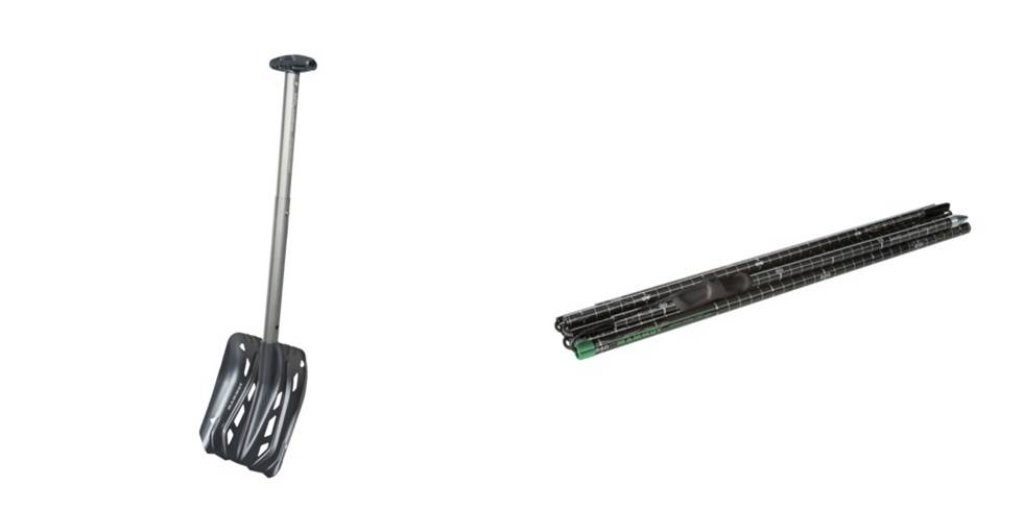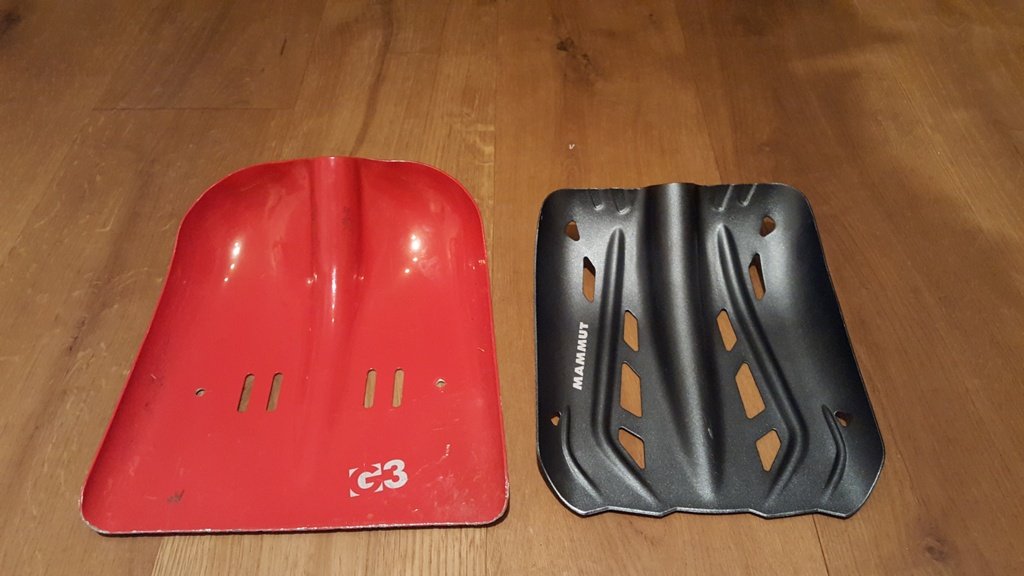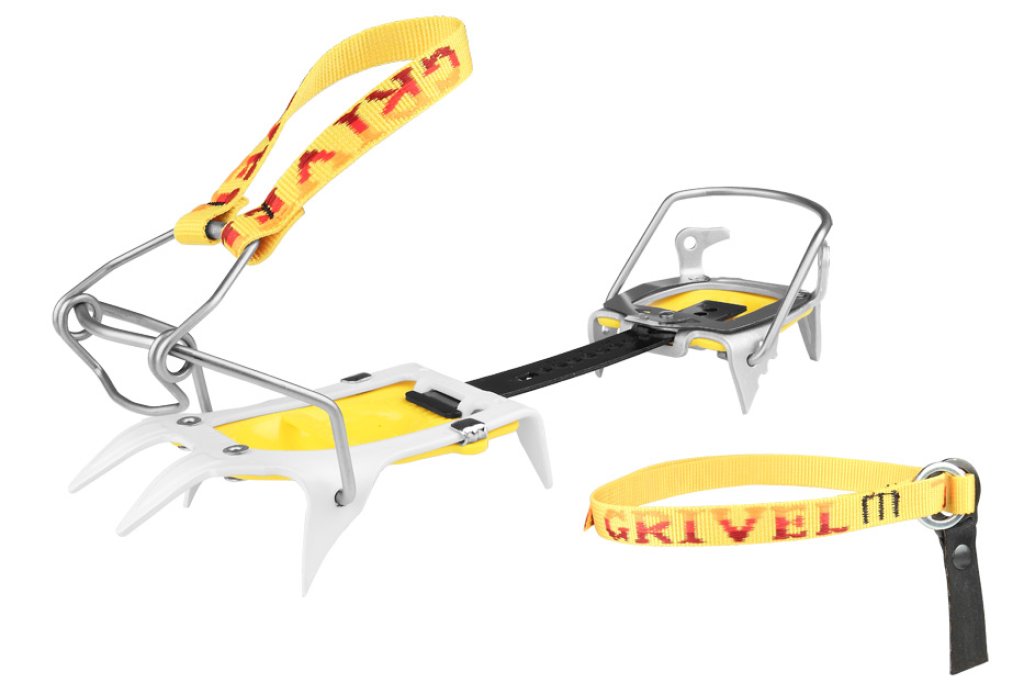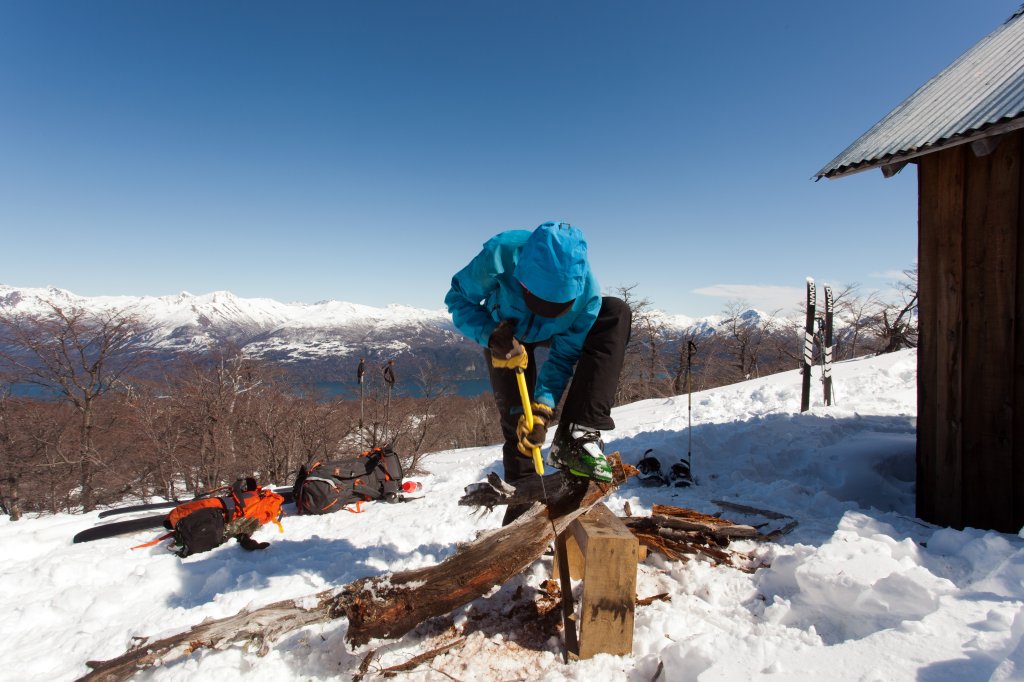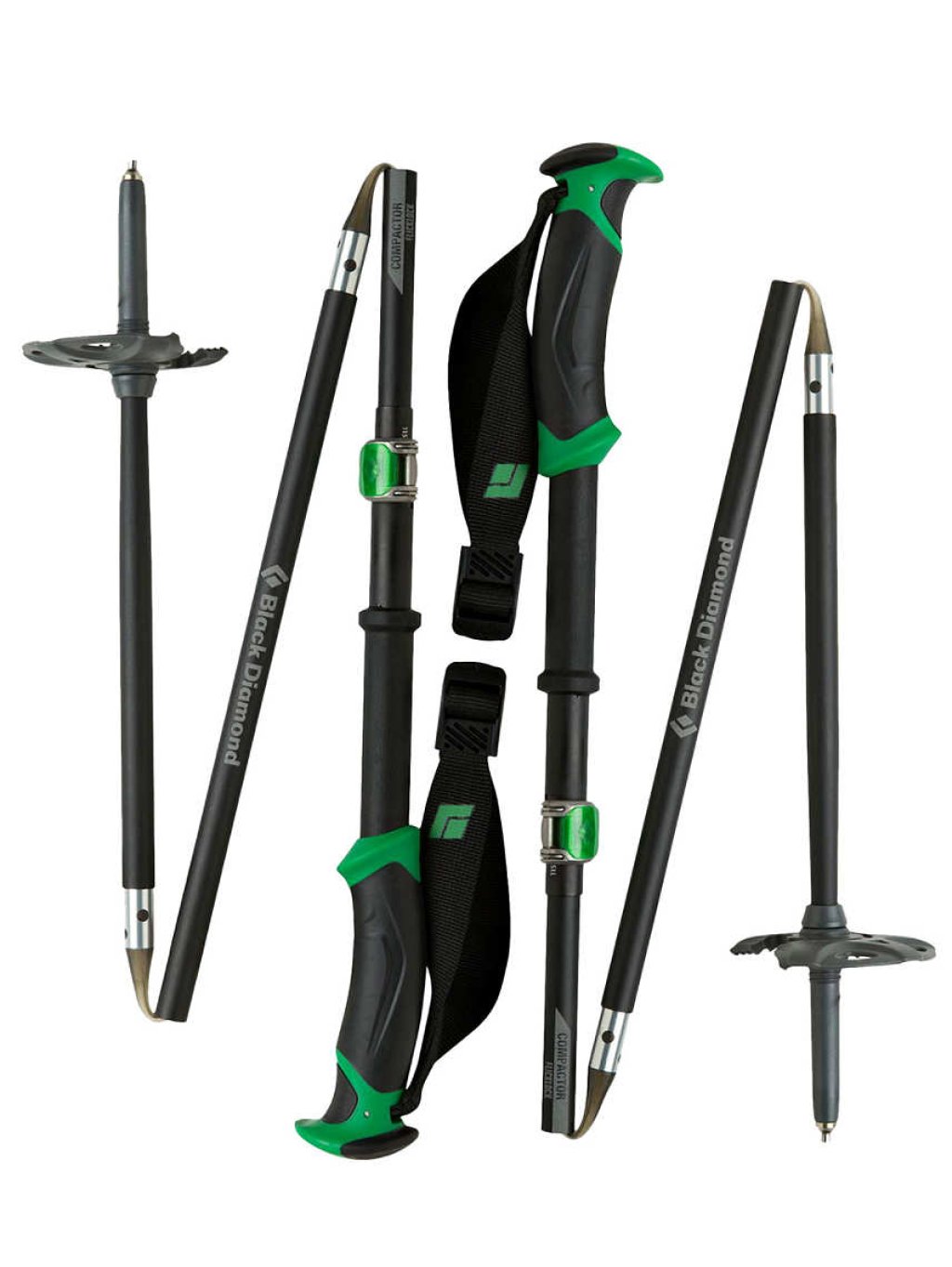If you want to ski in unsecured terrain, an avalanche transceiver, avalanche shovel and avalanche probe belong in your backpack, even before sausage and bread. Anyone who has attended an avalanche course understands that it is vital to rescue buried victims as quickly as possible. The avalanche transceiver is used to roughly locate a buried victim, the probe for precise location and the shovel for rescue. Experience has shown that shovelling takes the longest for experienced rescuers, especially when the burial depth is more than one meter.
It is therefore logical that the main focus of an assessment of shovels and probes is on their efficiency in terms of avalanche rescue. In times of 'Fast and Light' alpinism, another criterion for evaluating the set is weight. As the name suggests, the Mammut set discussed here is on the light side.
The shovel
Unlike what you would expect from a 'light' shovel, the Mammut shovel is not made of carbon or plastic, but as the name suggests, of aluminum. Therefore, at 470g (manufacturer's specification 460g), it is significantly heavier than a carbon shovel, as is common in ski touring (approx. 250g). Nevertheless, it is almost 300g lighter than my old shovel (G3 Avitech)!
Lighter is already a good thing. The question now is what that means in terms of safety. A large part of the weight saving comes from the size of the blade. Compared to the G3 shovel, the Mammut shovel is much smaller (see picture 3). In addition, the blade has several holes and is structured. In my opinion, the holes make no sense except for weight optimization. The structure, on the other hand, gives the shovel additional strength, so that the choice of thinner (lighter) material is justified. Theoretically, you can move more mass with the same number of movements with a larger blade. However, this also means more force is required per movement. This raises the question of whether it might be more efficient for less powerful people to remove a smaller mass of snow per shovel stroke?
An additional feature that makes the Mammut shovel efficient is the oval handle. This means that it does not twist when pulled apart and the metal nipples of the holder engage automatically and reliably. In addition, the handle mount on the shovel blade is shaped in such a way that the handle can be easily retracted without pressing the metal nipple. This can be a great advantage when operating the shovel with gloves and under stress.
In terms of price, the shovel is in the mid-range.
Advantages & disadvantages
+ Weight
+ Operation
+ Workmanship
- Small shovel blade
Details
- Weight 470g (manufacturer 460g)
- Length 75cm
- Handle length 37cm
- Shovel size 21x24cm
- Price 65.00 €
